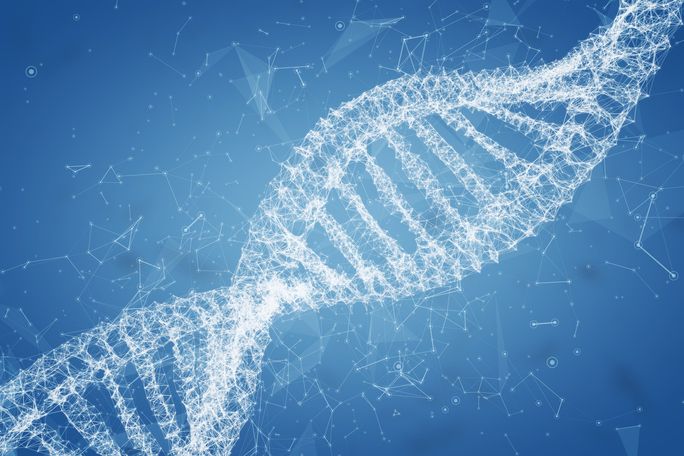How DNA Is Challenging Darwin’s Theory of Evolution
Discoveries about DNA have revolutionized our understanding of the complexity of life. Learn how this tiny molecule is challenging the theory of evolution and providing evidence of the existence of God.

The theory of evolution is embedded in our society. Despite fundamental problems with the theory, the idea that we evolved from simple organisms into human beings is believed and taught as fact in many schools. This belief has had a major impact on eroding belief in God, the Bible and human life as a unique creation with a purpose.
But today’s science has shown us many things that Darwin did not know when he developed his theory in the 19th century. Of course, not even biblical writers who praised God for the beauty and complexity of His creation understood these things. The more we learn about how life works, the more we can echo the psalmist’s words in Psalm 104:24: “O LORD, how many are Your works! In wisdom You have made them all” (New American Standard Bible).
One aspect of God’s work and wisdom that we should marvel at is inside every complex living thing: deoxyribonucleic acid (DNA). The more I learn about DNA, the stronger my belief in God becomes.
DNA is inside all living cells
Deep inside every living cell of your body is a DNA molecule that contains a treasure trove of information. DNA is two-millionths of a millimeter wide. It’s tightly coiled in the cell nucleus, but if unwound it would stretch almost 2 meters long (or roughly 6.5 feet).
That’s just a single strand of DNA. Put end to end, the DNA from a single human body (about 37 trillion cells) would be over eight times longer than the diameter of our solar system.
Why is DNA so important? Simply put, life would be impossible without it. DNA contains the genetic code to create a living organism. It’s an amazing structure that some scientists have called the “book of life.” It took hundreds of scientists 13 years to decipher the human genome (the human body’s complete set of genetic instructions).
Evolution cannot adequately explain the existence and complexity of the information found in DNA.
They discovered that each DNA strand contains about 3.3 billion base pairs, which, when written out would fill 1 million pages, or about 5,000 books stacked 200 feet high. Reading a book that long would take you nearly 100 years (reading nonstop).
The precise sequence of the letters is of utmost importance. A wrong sequence results in a genetic mutation, which can result in a genetic disorder.
Author Lee Strobel explains: “The data at the core of life is not disorganized, it’s not simply orderly like salt crystals, but it’s complex and specific information that can accomplish a bewildering task—the building of biological machines that far outstrip human technological capabilities” (The Case for a Creator, 2004, p. 244).
Even in 1985 molecular biologist Michael Denton wrote, “The intuitive feeling that pure chance could never have achieved the degree of complexity and ingenuity so ubiquitous in nature has been a continuing source of scepticism ever since the publication of the Origin” (Evolution: A Theory in Crisis, 1985, p. 327). DNA continues to challenge Darwin’s theory of evolution today.
DNA contains information
Many are now seeing the amazing power in this tiny molecule.
Microsoft founder Bill Gates has said: “DNA is like a computer program but far, far more advanced than any software we’ve ever created” (The Road Ahead, 1996, p. 228). Unlike software programs, the instructions within DNA run inside living organisms to generate complex building materials.
Beginning when a human being is conceived, the DNA found in that first cell copies itself again and again until there are trillions of cells. Within each cell, DNA has the preprogrammed ability to modify, ignore or emphasize different aspects of itself so that cells can perform specialized functions as part of your heart, liver, kidney, eye, bones, muscles, skin, etc.
DNA is the most compact information source known in the universe. A 2017 Science Magazine article reported that a new data storage system using DNA is “capable of storing 215 petabytes (215 million gigabytes) in a single gram of DNA”!
To fully grasp the depth of the impact of DNA, we need to understand a bit about information.
- Information cannot be generated by physical matter. Planets, stars, atoms, light, chemicals, plants, animals and all other physical things do not generate information.
- Information is not matter. Take a device and erase all the information on it, and the device will weigh the same. That is because information is not physical and has no weight.
- Information has only been observed to be created by intelligence. Natural processes do not produce complex information. No one goes to a library thinking the books inside naturally wrote themselves. The existence of a book full of information necessitates an author, even though we have probably never seen (and never will see) the author.
Using these commonsense facts, we can conclude from the existence and complexity of DNA that the information in it did not just happen naturally on its own. Evolution cannot adequately explain the existence and complexity of the information found in DNA.
The Bible makes the claim that the creation itself is proof that God exists and is the Creator (Romans 1:20). That basic truth is much more powerful when we can see the miraculous complexity of the creation at a molecular level. The mind-boggling complexity of DNA and its function within cells shows us how great our Creator’s intelligence truly is. The Bible reveals that God’s “understanding is infinite” (Psalm 147:5).
After accepting that there is a Creator God, the next step is learning more about Him and His purpose. He didn’t create the universe, the earth and human life for no reason. We offer many free materials to help you understand Him and His purpose better.
Date Posted: November 12, 2018



